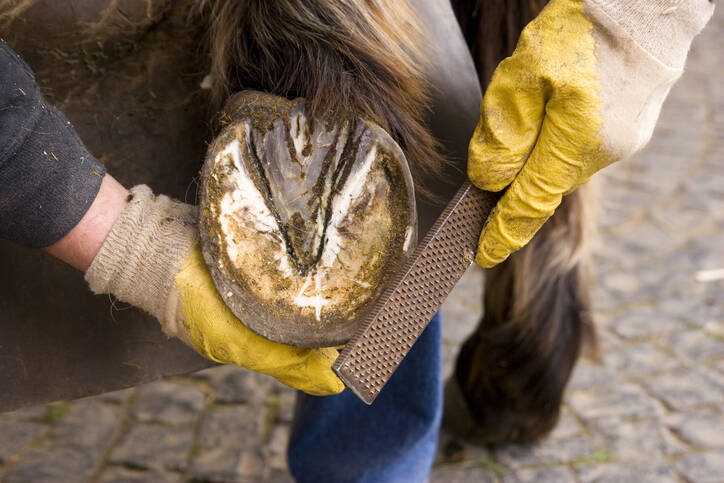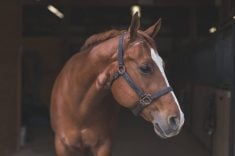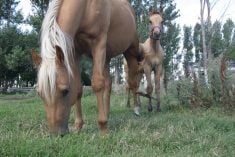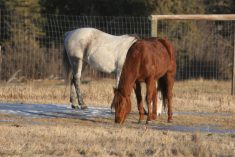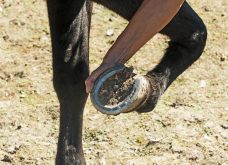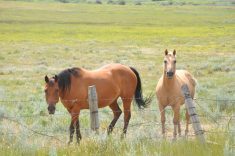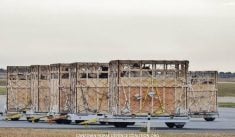Toe length significantly affects a horse’s movement and the health of the hoof. Maintaining a short toe in its proper position is essential for the structural integrity, functionality and soundness of the horse’s hoofs, providing a strong foundation.
While optimal toe length varies among horses, certain guidelines can be followed.
Domestic horses often get limited movement on abrasive surfaces that would naturally wear down their hoofs. Overgrowth is often a problem.
Read Also
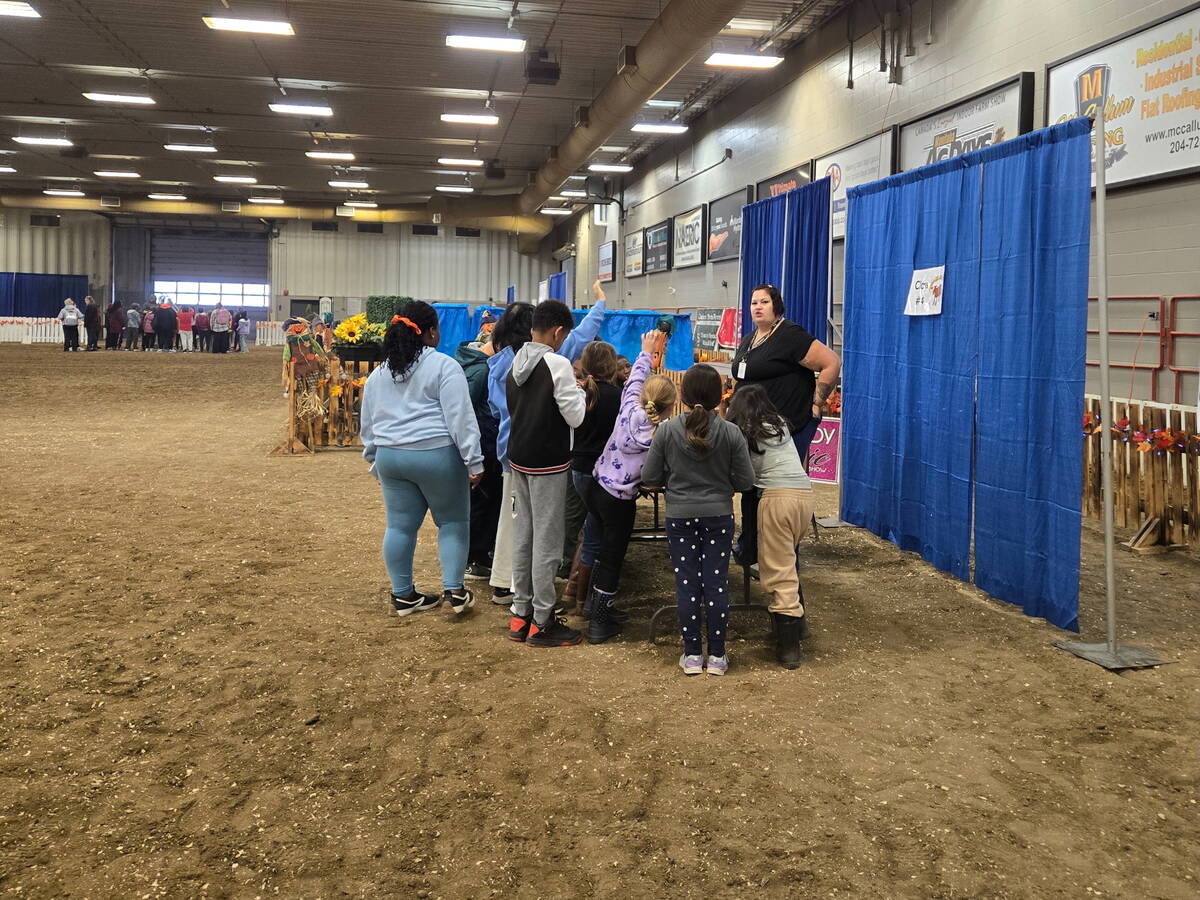
Hands-on with agriculture draws students to AG EX
Urban students flock to MooMania and EweMania at Manitoba AG EX 2025 to get a taste of cattle and sheep production and where their food comes from
This becomes a vicious cycle. The overgrowth adversely affects hoof balance and the horse’s movement, changing the way in which they travel and further compounding the longer toe.
An overgrown toe exerts lever forces that temporarily pull the hoof capsule with each step, causing the hoof to gradually migrate forward. This forward displacement undermines the horse’s foundation, leading to hoof imbalances and various biomechanical issues throughout the body.
Resulting hoof problems can include weak, deformed, under-run and/or contracted heels, weak frogs, thin soles lacking concavity, quarter cracks, laminitis and tender-footedness.
Unnatural forces from a long toe disrupt proper heel-first footfall, limb movement and energy management within the hoof. This can lead to injuries within the hoof itself and damage to the navicular apparatus and caudal foot structures, and cause widespread harm to the musculoskeletal system. The horse’s movement becomes inefficient, unco-ordinated and exhausting.
Fixes
Restoring the proper position of the toe is essential to mitigate these issues and promote hoof health.
The toe is gradually repositioned to alleviate strain on the foot, limb and body. As the toe is brought back, the rest of the hoof generally follows suit. This allows the frog to realign under the bony column, the heels to transform and the sole to change shape accordingly.
Overgrowth can occur in both downward and forward directions. The trimmer must address both types to maintain hoof balance.
A “long toe” usually means the hoof wall has grown beyond the sole plane. This downward overgrowth requires trimming the hoof wall from the sole surface until it is about 1/16 to 1/8 of an inch above the sole plane.
The less recognized forward creep and flared toe necessitates vertical adjustments. The hoof must be realigned with the white line or water line, depending on the horse’s specific needs and degree of forward flare.
In natural, rugged environments, the unfettered toe of the hoof wears down to meet the ground at the flexible waterline, forming a rounded, beveled edge on the leading edge of the hoof wall (from 10 to 2 o’clock). This is known as the “mustang roll.”
Recreating this profile mimics this natural wear, addressing the vertical aspect of forward flare. The contoured edge alters the energy dynamics within the hoof and enhances the horse’s movement. Regularly renewing the mustang roll with a rasp every two weeks maintains its benefits, especially during hoof rehabilitation.
Proper care of the hind toes is equally important.
Hind feet typically land heel-first due to the zig zag arrangement of hind leg joints. Forward flare can disrupt this pattern and delay the breakover of the hind legs. Without a sharp breakover, the hind limbs lack sufficient time to extend fully forward, leading to improper carriage, propulsion and movement.
Addressing hind toe overgrowth by backing up the toes, often to the white line, helps assure a correct flight pattern and limb movement.
Corrections shouldn’t be rushed. Toe position changes should be paced to accommodate each individual foot if the horse is to move comfortably during the adjustments.
A measured approach prevents unnecessary sensitivity and foot soreness. The overgrowth didn’t happen overnight, and the tissues will require time and patience to return to their proper alignment.
Effectively managing toe length involves regular monitoring every four weeks, coupled with guidance and care from qualified equine professionals. Establishing a schedule allows for timely adjustments tailored to the horse’s needs and environment.
During rehabilitative work, paying closer attention to the toe from the 10 to 2 o’clock positions can yield notable improvements to hoof balance and horse movement.
Restoring and maintaining the correct toe position is an essential task for hoof care providers. It greatly enhances the horse’s agility, fluid movement and overall hoof balance and health.


